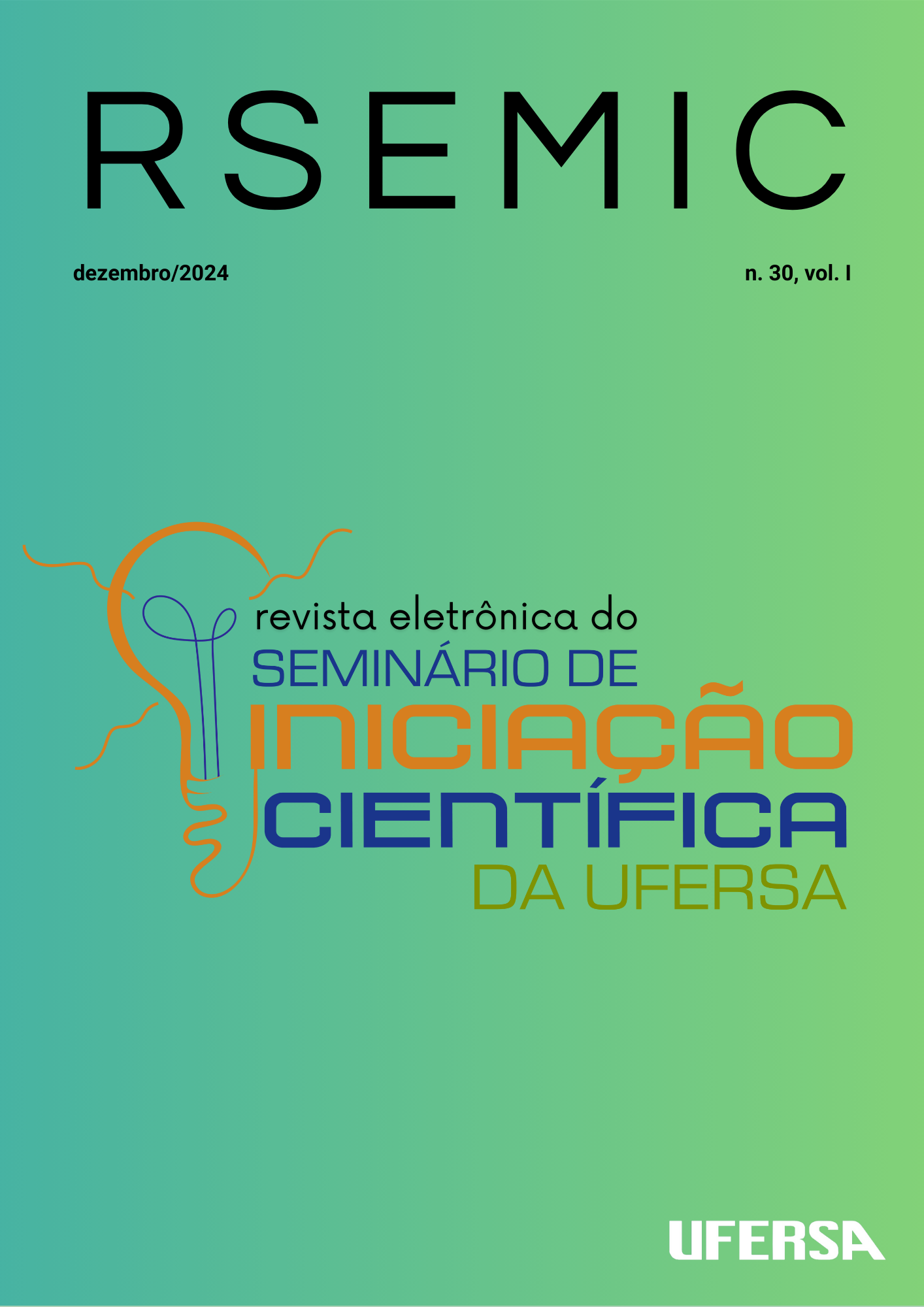Características fisiológicas do gergelim sob aplicação de fitohormônios na mitigação do estresse salino.
Palavras-chave:
atenuante, oleaginosas, pigmentos fotossintéticos, salinidade, Trocas gasosasResumo
Salinity is a critical factor limiting agricultural productivity, especially in sensitive crops like sesame. The exogenous application of plant hormones can improve plant tolerance to salt stress. This study aims to investigate the impact of these hormonal mitigators on the physiological characteristics of sesame under saline conditions. The experiment was conducted in a greenhouse at the Universidade Federal Rural do Semi-Árido (UFERSA), Mossoró-RN, under semi-arid climate. Sesame seeds (cultivar Anahí) were sown in 21.5-liter pots filled with soil and cattle manure (2:1 v/v). The plants were subjected to different levels of salt stress, induced by sodium chloride (NaCl) at concentrations of 0.5 dS.m⁻¹ (control), 2.5 dS.m⁻¹, and 4.5 dS.m⁻¹, in addition to the application of methyl jasmonate, melatonin, and putrescine (1 mM) as mitigators. The experimental design was a randomized block design with a 3x4 factorial scheme, totaling 48 experimental plots. Physiological variables such as gas exchange and chlorophyll and carotenoid contents were analyzed. Statistical analysis was performed using Tukey's test (p<0.05) with the R software. The results indicated that salinity significantly impacted the physiological and biochemical variables of sesame plants, leading to a reduction in net CO2 assimilation rate, transpiration rate, and chlorophyll content as NaCl concentrations increased. The use of attenuators, such as melatonin and putrescine, demonstrated a partial ability to mitigate these effects, although their effectiveness was limited under high salinity conditions. The highest net CO2 assimilation rates were observed with melatonin and putrescine under low salinity (0.5 dS/cm). However, as salinity increased, a significant reduction was noted, especially in the absence of attenuators. Salinity also caused a decrease in chlorophyll and carotenoid contents, with more pronounced reductions in chlorophyll b. Despite these changes, the chlorophyll a/b ratio remained relatively stable. Melatonin and putrescine were the most effective attenuators in maintaining photosynthetic pigment levels, although their effects were limited under high salinity conditions. These findings highlight the importance of using attenuators as a strategy to reduce the impact of salinity on sesame plants, though their efficacy varies depending on the level of salt stress.

